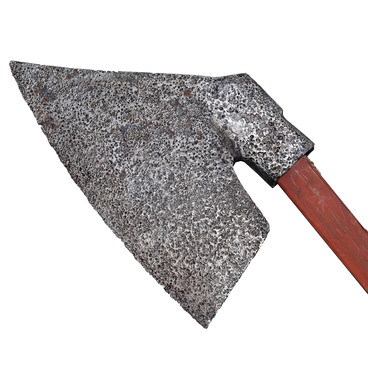In ancient Rus clay jars for storing small money, usually silver kopecks and copper quarters, were called thrift boxes (in Russian — ‘kubishka’). They had broad sides and a narrow neck. Thrift boxes could be of different sizes: some of them fitted on a palm, others were the size of a big jar.
White clay thrift box
Creation period
16th century
Dimensions
8,8х7,2 cm
Technique
Clay, throwing wheel, clay firing
Collection
Exhibition
1
Open in app#1
White clay thrift box
#2
#4
The name thrift box (in Russian -“kubishka’) comes from the word cube (in Russian — “kub”). However, not all thrift boxes were cubic in form. Often they were made circular, almost spherical. Stretched jars similar to steep-sided small jugs were also found.
#10
White clay thrift box
#6
In various regions, such thrift boxes looked differently. Novgorod, Pskov and Smolensk craftsmen covered them with yellow or brown glaze. In Moscow more popular were black glossy thrift boxes. First, they were polished to mirror finish and then fired in smoky flames until they became black. Such thrift boxes looked as if they were metal. Most often village potters did not ornament or polish their thrift boxes. They were made on throwing wheels and simply fired after that.
This small white clay thrift box was discovered during excavations at the Pokrovskaya hill — the oldest settlement in the Bryansk region. The research was carried out by the Archeology Institute of the Russian Academy of Science headed by historian Tamara Ravdina. Some other items including an iron mouth harp, crossbow arrow head, clay pottery of different forms and women’s iron, glass and precious stones adornments were also discovered at the Pokrovskaya hill. All the discoveries date back to the 12th — 16th centuries.
#8
The white clay thrift box was made on a throwing wheel in the 16th century. After firing no special decorations were made. Its height is about 9 cm, while its width is just over 7 cm. The thrift box was discovered during excavations at a 16th century house.
#9
Unlike most ancient clay items, this thrift box preserved to the present days entirely. Its special form contributed this: the broad sides managed to withstand large weight and high pressure. Such thrift boxes could be hidden in the ground or rocks without fear of being broken or cracked. Its narrow neck prevented the coins from trickling out. To take out their contents thrift boxes had to be broken.
#11
State budgetary cultural institution Bryansk State Regional Ethnography Museum
read morehide
00:00
00:00
1x
White clay thrift box
Creation period
16th century
Dimensions
8,8х7,2 cm
Technique
Clay, throwing wheel, clay firing
Collection
Exhibition
1
Open in app
Share

